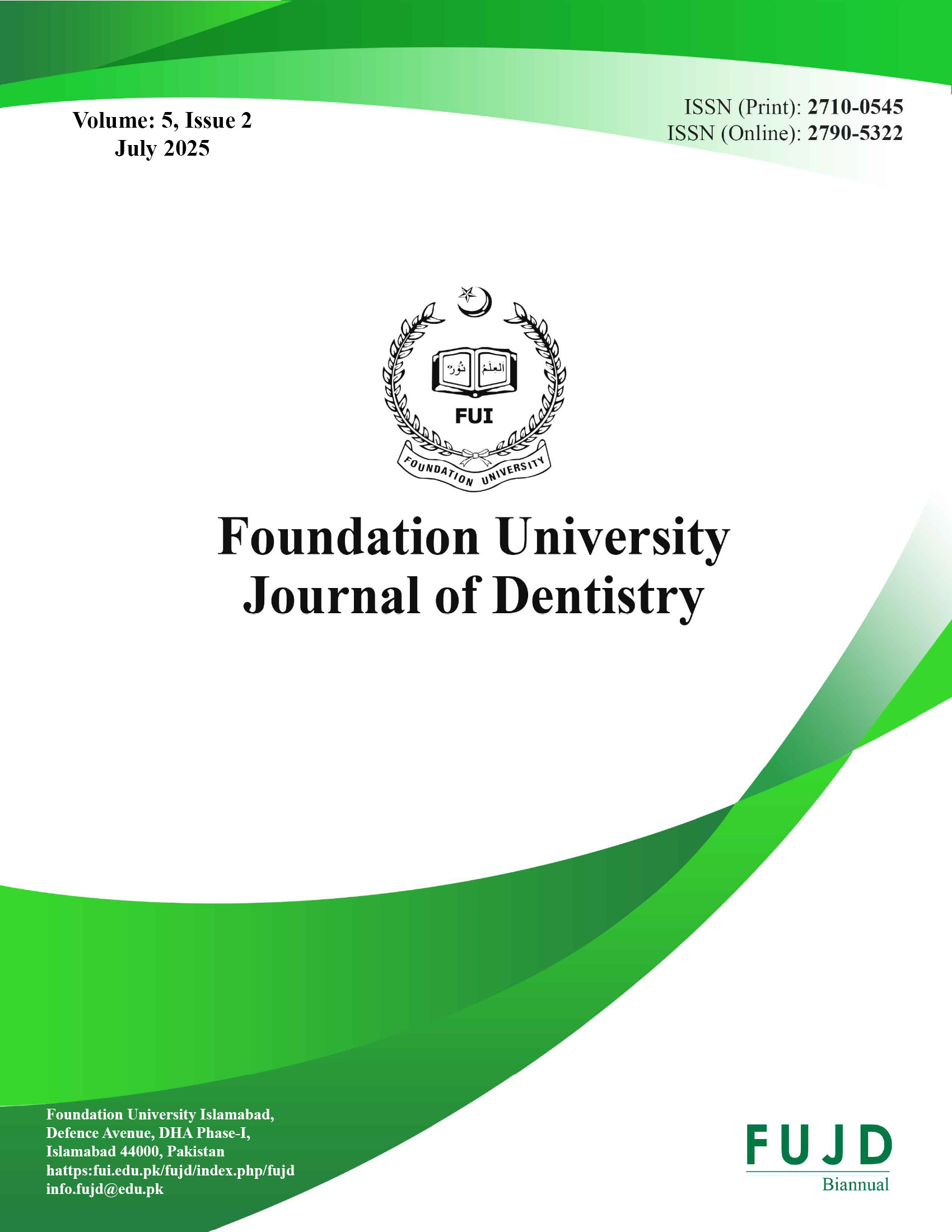Pre-Operative Anxiety Patterns in Patients Undergoing Impacted Lower Third Molar Extraction
DOI:
https://doi.org/10.33897/fujd.v5i2.455Keywords:
Anxiety, Oral Surgical Procedures , Impacted ToothAbstract
Objective: This study aims to determine the correlation between the State-Trait Anxiety Inventory (STAI-S) and the Amsterdam Preoperative Anxiety and Information Scale (APAIS) before the extraction of impacted third molars.
Materials and Methods: Patients reported to the OMFS department for the extraction of impacted third molars were selected based on a thorough history, clinical examination, and radiographic evaluation. During their initial visit, patients completed the STAI-S and STAI-T scales to measure their anxiety levels. Following the completion of these scales, detailed information about the surgical and anesthetic procedures, as well as potential complications, was provided. Informed consent was obtained. Prior to the surgery, patients completed the APAIS to measure their dental anxiety.
Results: A total of 50 patients, comprising 13 males and 37 females, having a mean age of 28.86 ± 5.85 years. The average scores on the APAIS and STAI-S scales were 17.06 ± 2.49 and 23.48 ± 2.35, respectively. A positive correlation (r = 0.606) was observed between the APAIS and STAI-S scales before the removal of impacted third molars.
Conclusion: The study concludes that there is a positive correlation between the STAI-S and APAIS scales in patients before the extraction of impacted third molars.
Downloads
Published
Issue
Section
License
Copyright (c) 2025 Erum Riaz, Sadia Paiker, Maimoona Siddiq, Saeed Ullah Shah, Muhammad Umar Qayyum, Mazhar Khan

This work is licensed under a Creative Commons Attribution-NonCommercial 4.0 International License.
All copyrights © are reserved with the author(s) under (CC BY-NC 4.0). Foundation University Journal of Dentistry (FUJD) is an open-access peer-reviewed journal that allows free access to its published articles, in addition, to copying and use for research and academic purposes; provided the article is correctly cited. FUJD does not allow commercial use of any article published in FUJD. All articles published represent the view of the authors and do not reflect the official policy of FUJD.


